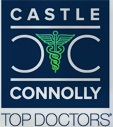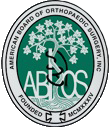What is Kyphosis?
Kyphosis is an abnormal curvature of the spine that causes rounding of the upper back or a “hunchback”. The thoracic region in the spine normally has a C-shaped curve, but when it develops an excessive forward curve, it can lead to kyphosis. Kyphosis typically affects the thoracic spine but may also affect the cervical and lumbar spine.
Spine Anatomy
The spine is made up of bones called vertebrae which are connected to each other through muscles and ligaments. Between the vertebrae lie soft, flat discs that provide cushioning and support to the vertebrae and prevent friction between them. This entire arrangement with the bones, discs, muscles, and ligaments forms the vertebral column, which provides protection to the spinal cord from the brain down to the base of the spine.
The spine is divided into three different regions:
- Cervical spine, or neck region
- Thoracic spine, or upper back
- Lumbar spine, or lower back
What are the Causes of Kyphosis in Children?
Kyphosis can develop due to a genetic defect or may be hereditary. Other medical conditions that may cause kyphosis in children include:
- Neuromuscular anomalies such as spina bifida or cerebral palsy
- Trauma resulting in a spinal fracture
- Spinal tumors, either cancerous or benign
- Bone infections such as osteomyelitis in the spine
What are the Types of Kyphosis in Children?
The different types of kyphosis in children include:
Congenital Kyphosis
This is present from birth. It occurs when the child’s spine does not develop properly in the uterus. It is not always obvious at birth and becomes more visible as the child begins to grow.
Postural Kyphosis
This occurs due to improper posture and becomes prominent in adolescence. It is common in children but is usually not very severe. Postural kyphosis can be corrected by following a correct sitting, standing, and walking posture, physical therapy, and wearing a back or spine brace.
Juvenile Kyphosis - also called Scheuermann’s Kyphosis
This is an advanced form of postural kyphosis. It occurs due to the abnormal triangulation of multiple vertebrae in the thoracic spine instead of the normal rectangular shape. The wedge-like shape bends the spine forward at a sharp angle. It is very difficult for a child with this condition to stand up straight.
What are the Symptoms of Kyphosis in Children?
A classic symptom of kyphosis in children is a hunched back. The other symptoms of kyphosis in children may include:
- Head tends to bend forward
- Discrepancy in the height or position of the shoulder or scapulae
- Excessive rounding of the shoulders
Children with severe kyphosis may exhibit the following symptoms:
- Back pain and stiffness
- Difficulty breathing
- Tightness in the hamstring muscles present at the back of the thigh
- Excessive weakness and fatigue
How is Kyphosis in Children Diagnosed?
A spine specialist or a pediatric surgeon should be consulted to diagnose kyphosis in children. During the check-up, the doctor will review your child’s history and symptoms. A thorough physical examination is performed to assess range of motion in the neck, shoulder, and lower back. Muscle strength and sensation may also be tested to rule out other abnormalities. Depending on the child’s age and health condition, the doctor may also order an X-ray, CT scan, MRI, or ultrasound to confirm the diagnosis of kyphosis.
What are the Treatment Options for Kyphosis in Children?
Kyphosis in children can be treated through either a conservative approach or surgery. The treatment aims to normalize the spine and promote natural growth and development. The doctor decides the treatment based on the child’s age and severity of the condition.
Non-Surgical Treatment
The first line of treatment for kyphosis in children is conservative management. This includes:
- Use of a spinal brace to correct spine curvature
- Use of orthoses to provide stability and walking assistance
- Exercises and physical therapy to gain mobility and muscle strength
Surgical Management
Surgery is recommended for children who do not respond well to conservative therapy or those with severe kyphosis. It is usually performed under general anesthesia through small incisions in the back. The surgery aims to straighten the spine. The commonly performed surgical procedures include:
Spine Fusion
This is performed to join the vertebrae together to form a solid bone. Metal screws, rods, or plates are used to hold the vertebrae in place during the fusion.
Spine Osteotomy
This involves excising or cutting out a portion of the vertebral column to allow for correction of the spinal malalignment.





 Book an Appointment
Book an Appointment
 Patient Portal
Patient Portal